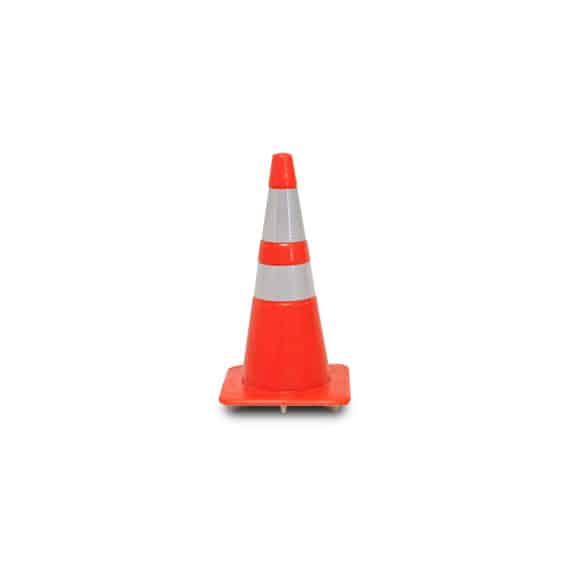Traffic Cones Canada
Traffic Cones Canada
Traffic cones have many indoor and outdoor purposes but they are more commonly used to give drivers advanced warning of roadside hazards like stalled vehicles, road condition changes and car accidents. At Barricades and Signs, we’ve got the tools, people and capacity to be a national supplier of Traffic Cones in Canada. As temporary traffic control devices, traffic cones are versatile objects that help drivers navigate construction and keep those working on the job site safe.
Traffic Cone Sizes and Specifications
The two most common sizes of traffic cones are 18” and 28”. They serve different purposes:
- 18” tall traffic cones are used in low-speed areas
- 28” tall traffic cones are used in busier, high traffic areas

Traffic cones come in all shapes and sizes, and depending on your needs be sure to review all applicable requirements. Check out our resources page to check your jurisdiction.
When traffic cones are used in road construction they must be orange and made of PVC to minimize vehicle damage. In addition, traffic cones can feature reflective collars to improve visibility to nighttime drivers.
Using Traffic Cones
Due to the lightweight and temporary nature of traffic cones, they are easily moved and often struck by road users. Here are tips to help with traffic cone placement:
- Proper spacing for continuous applications. Traffic cone spacing can play an important role in the driver experience. If you do not want road users to pass through the traffic cones, space them closure together. If you want to guide traffic but still allow traffic to flow through the traffic cone wall, leave large spaces that can fit large vehicles.
- Pick the right traffic cone. As mentioned above, the two most common traffic cone sizes are 18” and 28”. If you are controlling traffic in a high-speed location be sure to use larger traffic cones to increase visibility and durability. Smaller cones are ideal for parking lots and residential areas.
- Adequate buffer areas. When using traffic cones to warn drivers of say a stalled vehicle, consider the buffer zone on both sides of the cone – between the cone and the stalled vehicle and distance between the cone and moving vehicles. This distance should give motorists enough time to maneuver around the hazard without having to make last-minute driving changes.
Check out the traffic cones at Barricades and Signs to get prepared for your next project or to keep in your vehicle in case of an emergency.

